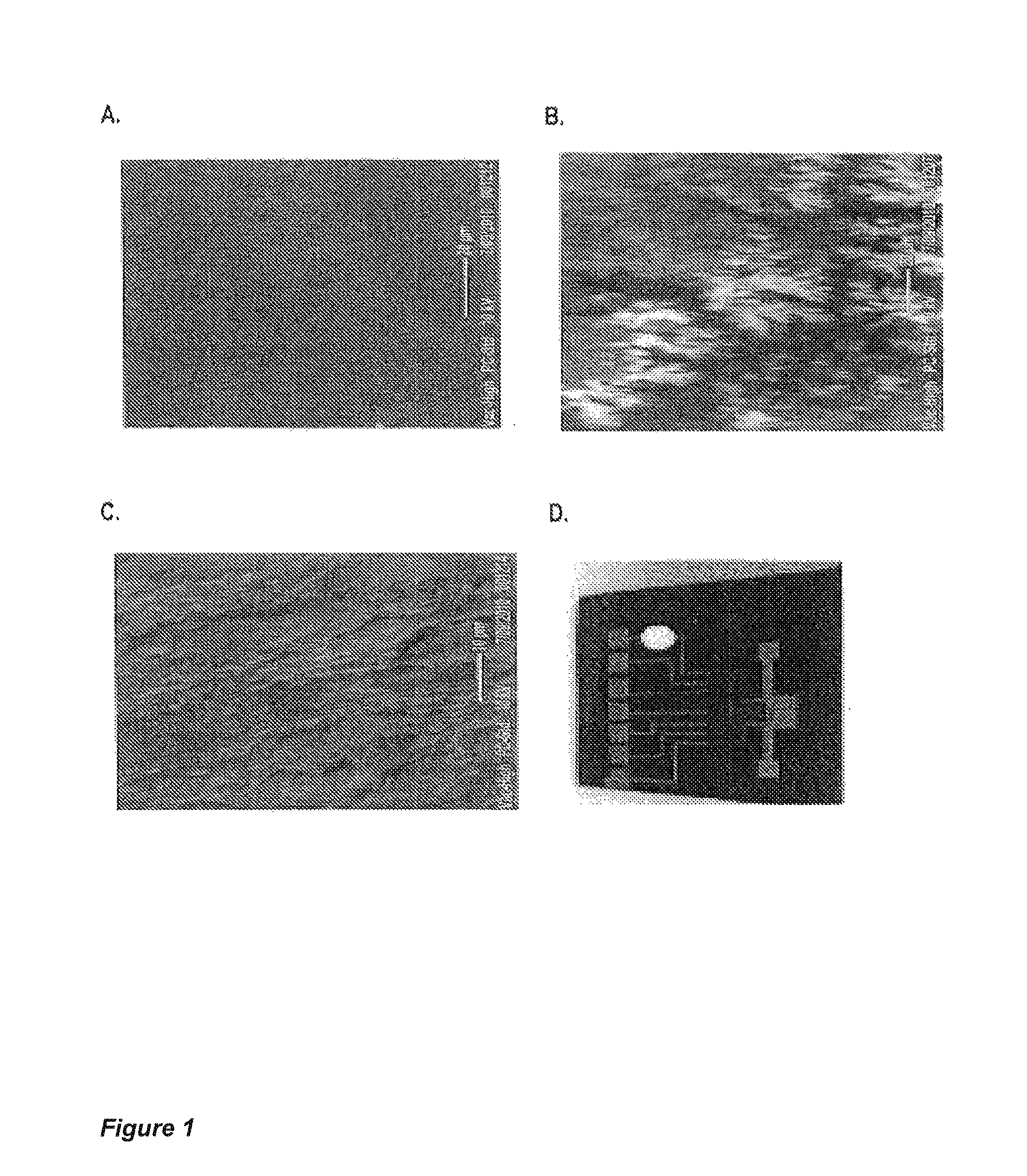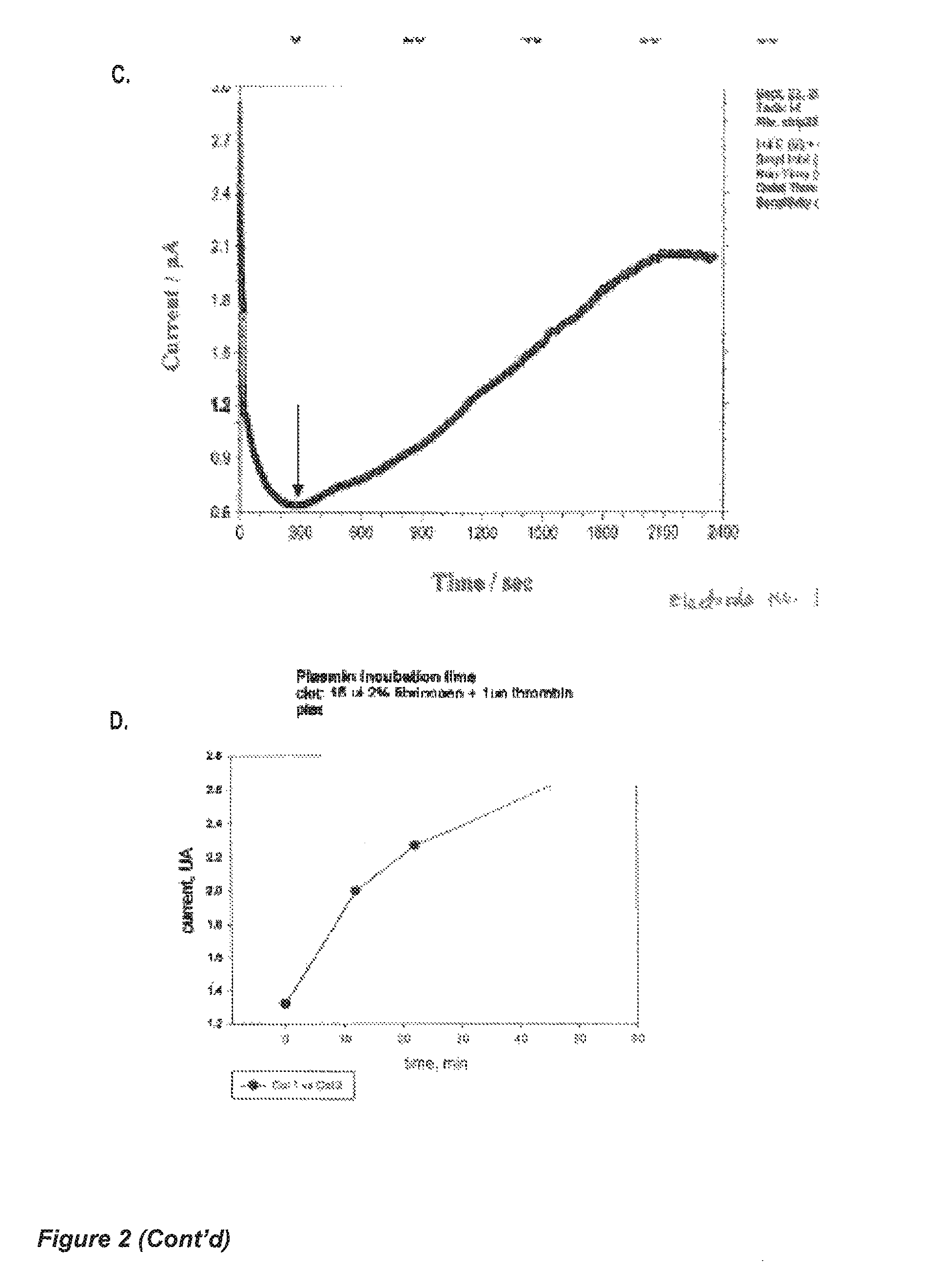System and method for detecting and monitoring proteolysis of protein matrices
a proteolysis and proteolysis technology, applied in the field of electrochemical testing instruments and methods, can solve the problems of inapplicability to point of care or field diagnostics, inconvenient use, and inability to detect fibrinolysis,
- Summary
- Abstract
- Description
- Claims
- Application Information
AI Technical Summary
Benefits of technology
Problems solved by technology
Method used
Image
Examples
example 1
Voltammetric Measurement of Proteolysis
[0135]Human fibrinogen and human thrombin stock solutions are mixed to yield 10 μL final solution (2% fibrinogen+0.1 U of thrombin final concentrations), which was vortexed and immediately applied to a 5×5 mm filter paper strip (Whatman No. 4, with large pore size, 30-40 μm particle retention). A fibrin clot was formed within the pores of the paper strip, and the strip left to dry at room temperature for two hours. Due to the fibrinogen concentration, the clot pore-sizes are smaller than the pores in the filter paper.
[0136]The strip-clot was impregnated with a solution of 50 mM K3Fe(CN)6, containing 0.2% Tween 20, and left to dry. The strip was attached to a chip containing flat printed electrodes (either gold or conductive carbon). An optional silver wire can attached to the strip as a reference electrode (FIG. 3C). The strip is rehydrated with a phosphate-buffered saline physiological solution (PBS), containing 2 nM human plasmin PBS without ...
example 2
CES and WES Used for Chronoamperometry
[0137]Refer to the aforementioned mixed composition of the WES and CES employed for chronoamperometry measurements. As an example, in the Fc-PEG elactomer discussed above, the electroactive Fc moiety has a standard electrode potential E0 of +0.641V, and elactomer itself has even higher E0, given the pi-electron in the amide bond (measured E0 is in the +0.7V to 0.75V range). If the reduced form of the WES is used for measurement at the WE, this high resistance to oxidation—relative to other commonly used electroactive species—provides tolerance to a number of oxidizing CES. Nevertheless, due to the concentration excess of CES, as discussed above, it is advantageous use a weak oxidizer as the CES, so that the WES exists predominantly in its reduced state.
[0138]Accordingly, as an example, an appropriate CES is ruthenium (III) hexamine, Ru(NH3)63+, which has standard electrode potential E0 of +0.1V. Based on the Nernst equation, a WES-CES compositio...
PUM
| Property | Measurement | Unit |
|---|---|---|
| pH | aaaaa | aaaaa |
| pore size | aaaaa | aaaaa |
| pore size | aaaaa | aaaaa |
Abstract
Description
Claims
Application Information
 Login to View More
Login to View More - R&D
- Intellectual Property
- Life Sciences
- Materials
- Tech Scout
- Unparalleled Data Quality
- Higher Quality Content
- 60% Fewer Hallucinations
Browse by: Latest US Patents, China's latest patents, Technical Efficacy Thesaurus, Application Domain, Technology Topic, Popular Technical Reports.
© 2025 PatSnap. All rights reserved.Legal|Privacy policy|Modern Slavery Act Transparency Statement|Sitemap|About US| Contact US: help@patsnap.com



